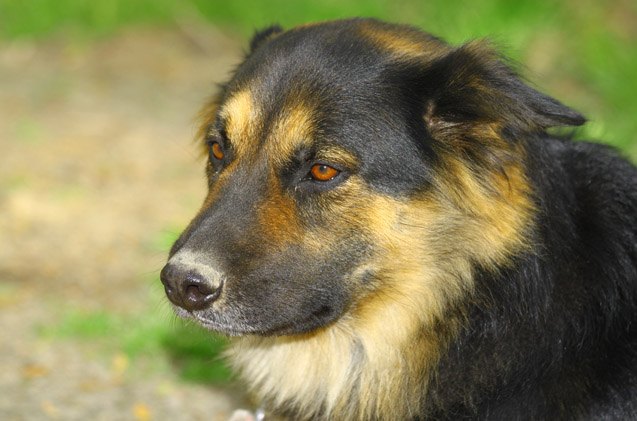German Sheppweiler


About German Sheppweiler
The loving and loyal German Sheppweiler brings together the intelligence of the German Shepherd Dog and the calm, confident nature of the Rottweiler for a great companion dog who is affectionate, devoted and protective of his family. He’s a quick study when it comes to training, making him a wonderful non-aggressive watchdog.
The loving German Sheppweiler brings the smarts of the German Shepherd Dog together with the calm, confident nature of the Rottweiler.
The German Sheppweiler is considered a designer dog and likely dates back to the 1980s or 90s when breeders first begin mixing pure-bred dogs to produce puppies that carried the desired traits of both parent breeds – typically a healthier, smaller, hypo-allergenic or gentler form of a popular breed.
The German Sheppweiler is the product of two different breeds of dog meaning he doesn’t qualify to join American Kennel Club (AKC) however both parent breeds are members; the Rottweiler joined AKCs “working” group in 1931 while the German Shepherd Dog was named to AKC’s “herding” group in 1908.
The German Sheppweiler is a large dog that loves to eat and can easily become obese. Because of potential joint issues later in life, he must be kept trim and fit so plan to feed him a nutrient-rich kibble specifically designed for his age, size and activity level. Avoid fillers that may cause him to over-eat to feel full and plan to feed him 2 to 3 smaller meals throughout the day versus free-feeding.
The German Sheppweiler is a loyal, affectionate animal who gets along well with children and other pets.
The German Sheppweiler comes from two highly intelligent breeds and picks up commands quickly. This dog can be highly protective of his family so early socialization and obedience training is important to ensure he gets along with other animals, children and new faces. A firm, consistent approach is ideal with pack leader being established from the onset. Use a rewards-based approach with lots of praise and treats for a job well done and if you aren’t seeing progress, bring in a professional – never fail to deal with training this dog.
This is a big boy – you can expect your German Sheppweiler to weigh in the range of 75 to 115 pounds once he reaches adulthood.
The German Sheppweiler is a loyal, affectionate animal who gets along well with children and other pets when properly socialized. His tendency to bond closely with his family can result in an overly-protective nature that can be curbed with early socialization however it also makes him a great non-aggressive watchdog. While he is highly obedient, he can possess a stubborn streak and will require a strong pack leader from whom to pick up his behavioral cues.
Designer dogs can typically side-step many of the health issues that plague their purebred parents however it’s always important to know what your new pup may inherit. In the case of the German Sheppweiler, that can include joint issues including elbow and hip dysplasia, bloat and degenerative myelopathy – a progressive disease of the spinal cord in older dogs.
As a big dog, the average life span of a German Sheppweiler is 10 to 13 years.
The German Sheppweiler is an energetic dog that will require at least 1 hour of exercise each day. He doesn’t need overly rigorous outings to keep him healthy and fit, however because he has a tendency to become obese, it’s important a daily walk become part of his day. Tossing a ball or Frisbee in a yard of off-leash park would be an ideal addition to his regular walking routine.
The affectionate German Sheppweiler bonds closely with his family members.
The German Sheppweiler is also known as the Shepweiler, Rottweiler Shepherd, Rotten Shepherd, Rottie Shepherd or Shottie and while he doesn’t quality to be a member of the American Kennel Club’s roster of purebreds, he is recognized by the Dog Registry of America, Inc. (DRA).
The German Sheppweiler is a medium to heavy seasonal shedder and his thick, coarse coat will need brushing 3 to 4 times per week (more during shedding season) to keep it looking its best and the hair in check. Professional grooming will not be necessary and while bathing should only be done as needed, he may have the floppy ears of the Rottweiler so weekly inspection and cleaning should be done to avoid potential infection.
German Sheppweiler puppies can quickly become large dogs that are overly protective and difficult to manage. Socialization and training should begin as young as 5 to 6 weeks of age with establishment of pack-leader early on. Because this dog can be prone to joint issues, exercise and playtime should be careful not to over-stress tiny limbs and cause injury.
Photo credit: sherwood/Shutterstock; Barry Blackburn/Shutterstock; Susan Schmitz/Shutterstock

Sharing space with three seriously judgy Schnoodles and a feline who prefers to be left alone. #LivingMyBestLife
More by Mary Simpson

























